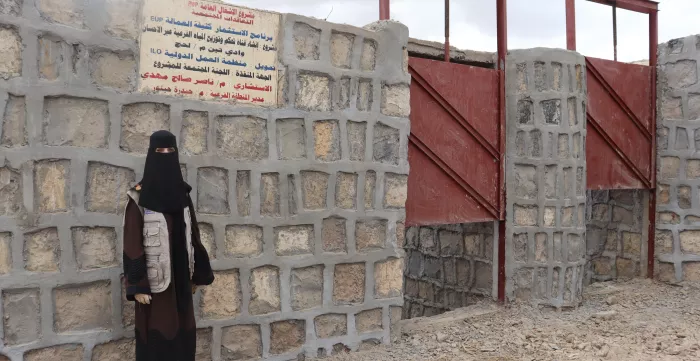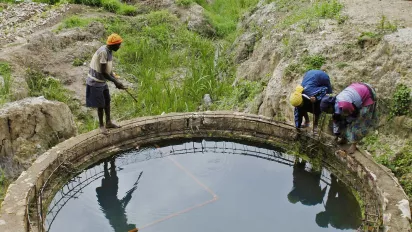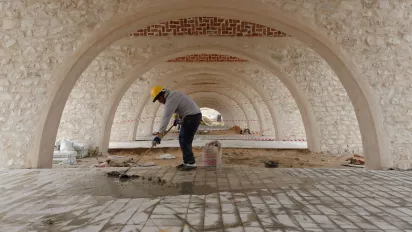
Employment-intensive investment
Around the world, millions of people lack infrastructure to access basic services such as safe drinking water, healthcare, and education. Enhancing infrastructure and maintaining it can improve living standards and have a direct impact on the quality of people’s lives. Productive community infrastructure can also contribute to reducing rural and urban poverty and have the potential of offering better economic and social benefits.
Employment-intensive investments link infrastructure development with employment creation, poverty reduction and local economic and social development. In using local labour and resources, they create much needed employment and income, reduce costs, save foreign currency, and support local industry while increasing the capacity of local institutions.
News and articles

Video
The story of women contractors in Yemen part of the Public Works Project (PWP), supported by the ILO

Empowering Yemeni Women in the Contracting Sector: A Leap Towards Gender Equality
Areas of work

Green Works

Crisis Works

Local Resource-Based (LRB) Technologies

Public and Private Sector Development

Public Employment Programmes (PEPs)

Employment Impact Assessment (EmpIA)
Cross-cutting areas
Employment-intensive investment activities embed cross-cutting areas that reflect core ILO values such as promoting gender equality, supporting social inclusion and reaching vulnerable groups, improving working conditions, combating climate change and protecting the environment, and fostering social dialogue.
The Employment-Intensive Investment Programme
The Employment-Intensive Investment Programme (EIIP) leads the ILO's employment-intensive investment activities. With over 50 years of experience in more than 70 countries, EIIP has built a unique portfolio of productive employment creation for economic development, social protection, and natural resource management.
Read the EIIP programme document: Creating jobs through public investment
Projects
Employment Intensive Infrastructure Programme in Lebanon (EIIP)
EU-STREIT Project in Papua New Guinea
Rural Entrepreneurship, Investment and Trade (STREIT) Programme
Project dashboard
Explore a selection of employment-intensive investment projects from around the world
Publications
STRENGTHEN2
Credit guarantee schemes, MSME access to finance and labour productivity in Africa
STRENGTHEN2
Employment impact assessment of Luangwa-Mwami road, part of the interregional Nacala Road Corridor Project, Zambia
Impact Study
Impact Study on Water and Gender: The Experience of the Province of Maguindanao in the Philippines
